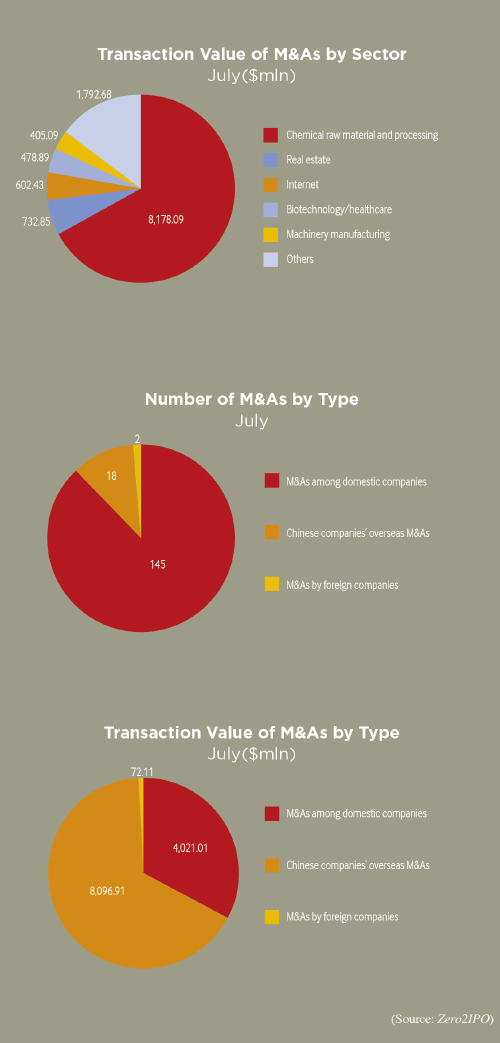| OPINION
No Necessity for China to Worry About Debt
Will China's debt problem develop into a crisis affecting the whole world? Foreign analyst Bert Dohmen, who holds grim views on the Chinese economy, recently expressed his concerns.
Three years ago in his book The Coming China Crisis, he had predicted the following sequence of events: "record debt, mal-investments, excessive debt-financed speculation in real estate, 64 million empty condominiums, a credit crunch followed by a credit crisis, and then a crash."
In the past three years, however, China's GDP has been growing 7.6 percent annually on average. This rate is lower than that before the global financial crisis, but still leaves China as the country experiencing the most rapid speed of growth worldwide.
In the meantime, China has improved its economic structure significantly: Since 2014, the service sector has made the largest contribution to economic growth. Without considering conditions in the real economy, it is extremely one-sided of this analyst to predict that China will soon be faced with a crisis.
Those harboring negative views on the Chinese economy may argue that a small sign can point to a greater trend. Then let us take a moment to examine just what are the "signs" of China's oncoming debt crisis that they have predicted will ensue.
Firstly, there are different methods for calculating the exact amount of China's debt. Since the country's economy is now based on indirect financing, I suggest using a simple formulation: The total debt incurred by Chinese companies, residents and governments is almost equal to the total assets possessed by banks. Then we can estimate that by the end of 2014, China's total debt--excluding those of financial institutions--stood at 170 trillion yuan ($26.6 trillion).
On the other hand, the growth of China's debt dropped remarkably since 2012. This indicates that since 2012, supervisory policies targeting shadow banking and local government financing platforms have been by and large effective.
China's high debt-to-GDP ratio is caused by its peculiar financing structure. According to research findings by Qu Hongbin, chief Chinese economist at HSBC Holdings Plc., the high savings rate and the bank-dominated indirect financing structure in China determine that bank loans constitute the majority of debts.
Therefore it's improper to compare China's debt-to-GDP ratio with those of other countries. In the monetary policy report of the first quarter of 2013, the People's Bank of China also made the same conclusion.
The rapid growth of China's debt can also be justified. Since 2008, all major world economies have adopted measures to fight the financial crisis, and increasing government expenditure has been an important policy tool. China is no exception. With the dual aim of improving people's quality of life in mind, the country has started a large number of projects focused on national wellbeing. This is an important factor underlying China's growing debt within such a short time.
Meanwhile, the Chinese Government has initiated a campaign for strict enforcement of financial discipline nationwide. This year, a massive municipal-bonds-for-debt swap has commenced in an orderly manner, which will involve 3 trillion yuan ($468.75 billion) by yearend. This will both alleviate the debt burden of local governments and strengthen the management of local government borrowing. The ongoing public-private partnership will also improve investment efficiency. All of these reforms will facilitate balance between debt growth and economic growth.
Last but not least, the ongoing economic reform in China will stimulate the global economy, and will help solve prominent problems in the domestic economy.
Changes in the international economic structure brought about by the 2008 global financial crisis provide China with a rare opportunity to accelerate the process of going international. The Chinese leadership cherishes this opportunity, and has been promoting the Belt and Road Initiative, taking the steps necessary to make the yuan an international currency and promoting a multi-level opening up of the financing market. These reforms will increase the overseas demand for Chinese products and services as well as investment.
The aforementioned five aspects augur well for China's future economic growth. New potentials brought about by structural reform, the improved capability of decision makers to learn and adapt, a stronger will to carry out international cooperation and the consensus of being quality- rather than quantity-oriented will all promote sound development of the national economy.
However, we will nonetheless take heed of negative views on Chinese economy, and will address these concerns through resolute reforms.
This is an edited excerpt of an article written by Zhang Tao, a research fellow with China Construction Bank, for Finance.people.com.cn
NUMBERS
24.1%
Year-on-year increase of China's fiscal expenditure in July, which exceeded 1.27 trillion yuan
6%
Year-on-year increase of China's value-added industrial output in July, down from 6.8 percent in June
28.85 tln yuan
Fixed assets investment in China in the first seven months, up 11.2 percent year on year
2%
Decrease in China's electricity output in July compared with one year earlier
2.43 tln yuan
China's retail sales in July, up 10.5 percent year on year
$210 mln
Chinese direct investment in Germany in the first quarter, surging 246 percent on an annual basis
1.48 tln yuan
New loans in yuan in China in July, up 1.61 trillion yuan from a year earlier
27%
Year-on-year profit increase of Chinese Internet giant Tencent Holdings in the second quarter, owing to robust growth of its revenues from online games and advertising
Copyedited by Eric Daly
Comments to yushujun@bjreview.com

| 